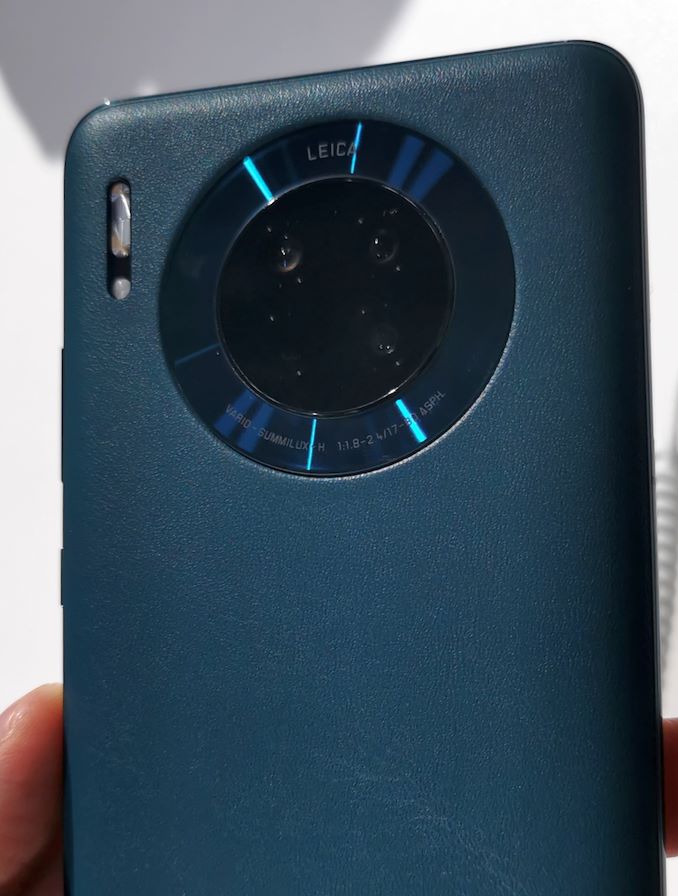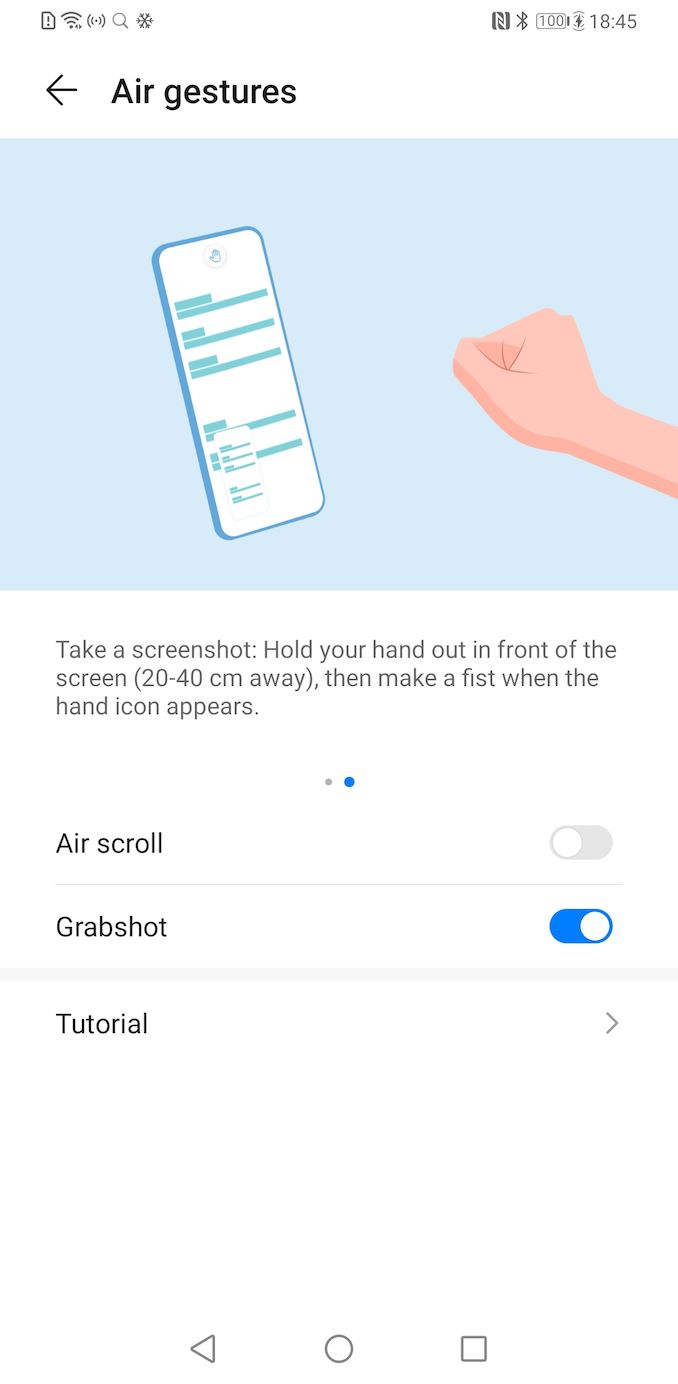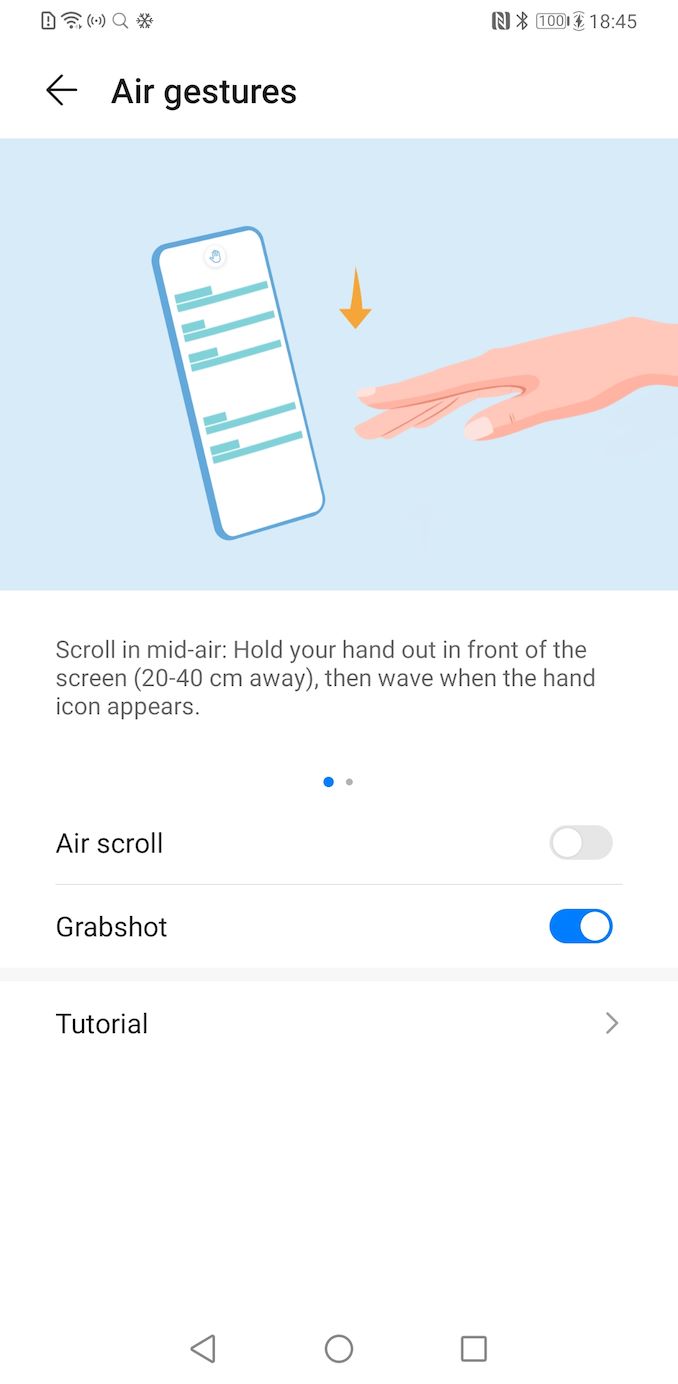A Day with the Huawei Mate 30 Pro: Kirin 990 and 7680 FPS Slow Motion Tests
by Dr. Ian Cutress on September 23, 2019 4:00 AM EST- Posted in
- Smartphones
- Huawei
- Kirin 990
- Mate 30 Pro
- 7680fps
The Technical Details
Inside the device beats the heart of Huawei’s latest silicon design efforts: a HiSilicon Kirin 990 SoC. We’ve covered the SoC in some detail already – we have an eight core design built on TSMC’s 7nm that uses Arm Cortex A76 cores and an Arm Mali G76MP16 GPU. Compared to the previous Kirin 980, these cores have had slight increases, but nothing to write home about. The biggest change is in the NPU for AI processing, where Huawei has changed from its licensed Cambricon design to its own in-house Da Vinci architecture, allowing for full AI network support. Huawei has added in a ‘tiny’ Da Vinci NPU to run super-low-power networks such as voice recognition, and a high-powered ‘large’ Da Vinci NPU for performance related AI such as image detection and enhancement. The CPU, GPU, and NPU, also get an additional layer of cache to help with its speed up.
| Huawei Mate 30 Series | ||||
| AnandTech | Mate 30 | Mate 30 Pro (Mate 30 Pro 5G) |
||
| SoC | HiSilicon Kirin 990 2x Cortex-A76 @ 2.86 GHz 2x Cortex-A76 @ 2.09 GHz 4x Cortex-A55 @ 1.86 GHz |
|||
| (HiSilicon Kirin 990 5G) 2x Cortex-A76 @ 2.86 GHz 2x Cortex-A76 @ 2.36 GHz 4x Cortex-A55 @ 1.95 GHz |
||||
| GPU | Mali G76MP16 @ 600MHz (Mali G76MP16 @ 700MHz) |
|||
| DRAM | 8GB LPDDR4X | 8GB LPDDR4X | ||
| Display | 6.62" OLED 2340 x 1080 (19.5:9) |
6.53" OLED 2400 x 1176 (18.4:9) edge-to-edge |
||
| Size | Height | 160.8 mm | 158.1 mm | |
| Width | 76.1 mm | 73.1 mm | ||
| Depth | 8.4 mm (9.2mm) |
8.8 mm (9.5mm) |
||
| Weight | 196 grams | 198 grams | ||
| Battery Capacity | 4100mAh (Rated) 4200mAh (Typical) 40W charging |
4400mAh (Rated) 4500mAh (Typical) 40W charging |
||
| Wireless Charging | 27W charging + reverse charging | |||
| Rear Cameras | ||||
| Main | 40MP f/1.8 RYYB sensor 27mm equiv. FL |
40MP f/1.6 OIS RYYB sensor 27mm equivl. FL |
||
| Telephoto | 8MP f/2.4 OIS 3x Optical zoom 80mm equiv. FL |
|||
| Wide | 16MP f/2.2 Ulta wide angle 17mm equivl. FL |
40MP f/1.8 RGGB sensor Ultra wide angle 18mm equivl. FL 720p7680fps video capture |
||
| Extra | - | 3D Depth Camera | ||
| Front Camera | 24MP f/2.0 | 32MP f/2.0 | ||
| Storage | 128 / 256GB + proprietary "nanoSD" card |
|||
| I/O | USB-C 3.5mm headphone jack |
USB-C | ||
| Wireless (local) | 802.11ac (Wifi 5), Bluetooth 5.1 |
|||
| Cellular | 4G LTE (4G + 5G NR NSA+SA Sub-6GHz) |
|||
| Splash, Water, Dust Resistance | IP53 (no water resistance) |
IP68 (water resistant up to 1m) |
||
| Dual-SIM | 2x nano-SIM | |||
| Launch OS | Android 10 w/ EMUI 10 without Google services |
|||
| Launch Price | 8+128 GB: 799€ |
8+256 GB: 1099€ (5G 8+256GB: 1199€) |
||
Huawei does have a faster Kirin 990 version on the way, the Kirin 990 5G: this chip is built using 7nm+ EUV, doubles the size of the NPU, but most importantly includes a 5G sub-6 GHz modem on board. This chip will be used in the Mate 30 5G and Mate 30 Pro 5G versions, which are coming out in China this year and select worldwide markets over time. We’re hoping to get hold of the 5G version to see for any quality differences between the 7nm and 7nm+ processes.
The display is a 6.53-inch 2400x1176 Flex OLED display, which comes in at that odd aspect ratio of 18.4:9. This is because of that wrap-around ‘horizon’ display, that comes over the edges. As mentioned on the previous page, some applications ignore these extra sides and act as if the display is a more standard 19:9 to 20:9 display. Huawei states that the display supports the DCI-P3 color space, though does not disclose how much of the gamut it covers, nor the brightness levels of the screen or the accuracy therein.
For the cameras, as mentioned on the previous page, Huawei is positioning the Mate 30 Pro as a premium professional photography assistant device to go alongside more expensive hardware. The three main sensors include a main 40MP f/1.6 OIS RYYB (27mm) sensor, a wide-angle 40MP f/1.8 RGB (18mm) sensor with support up to 7680 fps at 720p, and a final telephoto 8MP f/2.4 OIS with 3x optical zoom. Also included on the rear is a 3D depth camera.
The front camera is a 32MP f/2.0 selfie camera, paired with a proximity sensor, two 3D depth cameras, and a gesture sensor. The two gestures supported include taking a screenshot by making a fist, or scrolling up and down by waving.
The fingerprint sensor is embedded in the display, with Huawei stating that they’re using the latest generation technology. Based on previous Huawei devices, we assume this is a Goodix in-screen fingerprint sensor, which was confirmed via Goodix’s twitter feed. However, when quizzed as to which generation sensor (we know Goodix has at least four), neither Huawei nor Goodix responded to our inquiry.
The battery for the Mate 30 Pro comes in at 4500 mAh, although the company didn’t go into too many details about how long this should last. Huawei is offering the Mate 30 Pro in one main configuration: 8 GB of LPDDR4X-3733 for DRAM, and 256 GB for storage. The device is dual nano-SIM, supporting dual connections, and one of the slots supports Huawei’s proprietary nanoSD card. For the 5G model, both SIM slots can be 5G enabled, although only one at a time. Wi-Fi support is listed as Wi-Fi 5.













47 Comments
View All Comments
s.yu - Tuesday, September 24, 2019 - link
Andrei should definitely look into this.Haldi - Wednesday, October 9, 2019 - link
Seems like it has AI which helps you start recording at the perfect time, similar to Samsung.One thing I really miss one my XZ2 sometimes.
peevee - Tuesday, September 24, 2019 - link
" and other app stores, that contain the most popular applications (Facebook, Instagram, Whatsapp"And youtube or google maps are not as popular? BS. An Android phone without them is as good as useless.
SanX - Tuesday, September 24, 2019 - link
Add for comparison ASUS ROG II 12GB RAM 1TB storage, 6000 mAh battery, other processor phones like UMIDIGI latest phone with Mediatek Heliomaryammiahan - Thursday, September 26, 2019 - link
Thanks for this Post I think huawei mate 30 pro going to be a big hit and its camera features are most demanding features in smartphone.Cod3rror - Saturday, September 28, 2019 - link
Regarding the "Position 2: Clock Tower" picture. The auther says "however the Mate 30 Pro is a bit more hazier with less detail". I agree it's more hazy, but it definitely has more detail than P30 Pro.I am very impressed by Mate 30 Pro's details.
Haldi - Wednesday, October 9, 2019 - link
Ugs REALLY? I can do math myself...I know that 32 seconds on 30fps equal 960 frames in those 0.125sec which would be around 7680 frames in one Second...
But the Question is HOW?
You remember the Sony sensor which first made 960fps possible? They said it's impossible to render frames so fast, so they included onboard RAM on the sensor itself and transfer the data later.
The first Huawei phone which did 960fps simply recorded 240fps and used motion interpolation to upscale it to 960fps.
How can we be certain they didn't do anything similar here?
What kind of hardware tricks did they use to process 960 pictures in 0.125 seconds? Is the bus from Camera to cpu fast enough for that much data?
If so how comes we're limited to 0.125s why not use 0.25sec and 4gb of RAM?